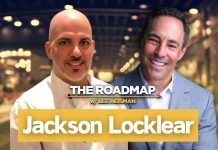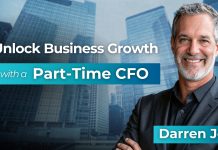[Original air date: 11/28/18]
Chances are your customer’s world is already full of inconveniences, and you don’t want your business to become one of them. But with an efficient and easy buying process, you can alleviate some of your customer’s stress, and win their loyalty. On today’s show, we welcome back Shep Hyken, New York Times best-selling author and customer experience expert to take an in-depth look at his six principles of the convenience revolution and how to use those principles to disrupt your business’s competition.
VIDEO TRANSCRIPT:
Jim Fitzpatrick: Welcome to the Atlanta Small Business Show, Shep.
Shep Hyken: It is great to be back, thanks for having me.
Jim Fitzpatrick: We got such great comments from our viewers the last time that you were on, so we want to kind of drill down here on these principles that you write about.
You got number one, reducing friction. Talk to us about that.
Shep Hyken: Sure. So reducing friction is all about convenience, that makes sense, and every one of the six principles that we’re going to talk about today have an element of reducing friction in them. But reducing friction is exactly that, just make it easier for the customer.
Now some companies have created an entire value proposition on reducing friction. Think about what Uber did to the taxi cab industry when they made everything so easy. They produced all the friction.
As an example, Wall Street Journal has an online program where you can read a certain number of articles before they say, “Hey, here is a subscription option that you have if you want to keep reading more.”
But this is what they found that was absolutely fascinating to me. Every time they eliminated a field or a line of question, they increased the likelihood that the person would subscribe by one to three percent, for every field or line they eliminated from the subscription process, which-
Jim Fitzpatrick: I can totally understand that, because I can’t stand filling all that information out.
Shep Hyken: Yeah. Yeah, make it easy.
Jim Fitzpatrick: So number two, self service. Talk to us about that.
Shep Hyken: Yeah, put it in the hands of the customer, give the customer the opportunity to manage their own experience. If you think about an online retailer like, and I use Amazon by the way, as one of my big case studies in the book, The Convenience Revolution, and then we give a bunch of different examples from small businesses to big businesses.
But I love my open example of Panera, and if you haven’t been to a Panera Bread, love going there for my sandwiches, go there for breakfast. They moved from walking up to the counter and ordering, to giving you the option of doing it self service over at a kiosk. That was their first move into what I call the self service.
People looked at the long line and when they learned to go over and do it on the screen, then go sit down and wait for the food, it became a more viable option. And when I asked the manager, “Why did you do that?” His exact words were, “For the convenience of our customers.”
Jim Fitzpatrick: Remember the days we used to actually have to go into the bank and talk to a teller in order to deposit our check?
Shep Hyken: Oh yeah.
Jim Fitzpatrick: You know, and now you just take a picture of it and it’s done.
Shep Hyken: Which actually, you’re going to go into the next one, which is technology, right?
Jim Fitzpatrick: That’s right.
Shep Hyken: Think about how that technology of taking a picture of the check, and how much easier. You don’t have to go to the bank anymore. What did that just save you?
Jim Fitzpatrick: That’s right.
Shep Hyken: Time.
Jim Fitzpatrick: That’s right.
Shep Hyken: Whenever you reduce time, you are actually creating a more convenient situation for your customers.
Jim Fitzpatrick: These are for some of you small business owners that are out there that, while you hear Shep go through this list, hopefully you’re thinking to yourself, “How can this apply to my business, whether I have 5 associates or 500 associates?” All of these elements is really good stuff for your customers and for your business.
Jim Fitzpatrick: Number four on here is subscription. Talk to us about that.
Shep Hyken: I love the subscription model, and most of the time people think of a subscription as a magazine or newspaper you subscribe to. But really think of it as simply, how can I interact with my customers ongoing that creates recurring revenue?
Shep Hyken: Now, let’s use a hardware store as an example, and let’s say that every six months a customer comes in to buy air conditioning or furnace filters that they have to go in and change. Well rather than make them come in every six months, why don’t you say, “Why don’t you give me your credit card number, your address? Every six months we’ll just automatically mail them to you.” But that’s how that subscription model works.
Shep Hyken: Companies like Chewy, or pet supply online retailer.
Jim Fitzpatrick: Right.
Shep Hyken: They now disrupted others in the traditional retail business, because if you want that 50 pound bag of dog food, you don’t have to go to the store anymore, pick it up, carry it to your car, take it out of the car, carry it to the front door, or whatever. It just gets delivered to you on an ongoing basis.
Jim Fitzpatrick: Right.
Shep Hyken: Every 30 days you run out of dog food, you set it up for every 30 days.
Jim Fitzpatrick: Yep.
Shep Hyken: That’s what subscription model is.
Jim Fitzpatrick: Perfect. Number five is delivery.
Shep Hyken: Yeah. Think about the pizza delivery. I think I was a teenager in college when I experienced my first Dominoes pizza delivery.
Shep Hyken: But my car dealership, for example, they deliver a car to me every time I need service, and they pick up mine, they bring it back. Well, that’s delivery. Think about what you can do to take it to your customer, rather than make them come to you.
Jim Fitzpatrick: Exactly. Then last on the list is access.
Shep Hyken: Yeah. Access is, how accessible are you to your customers? That means hours of operation, are you open at hours that are convenient to your customer, or are they more convenient to you as a company?
Shep Hyken: Look at logistics. How close are you to your customers? Think about, if you’re in a busy city, there’s a Starbucks on almost every corner.
Jim Fitzpatrick: That’s right.
Shep Hyken: You can’t go a block or two without it.
Jim Fitzpatrick: So many of the businesses now … Every business has to have a presence online, as you know, they’ll all have a website to some degree. Some websites are better than others.
Jim Fitzpatrick: What do you say to the business person that’s listening right now about their website, and how they need to really pay attention and take care of that website, so that when a customer comes on and wants that convenience, and they press a button and that product now isn’t there when they call, or when they click on, and say, “Oh, we sold out of that,” but yet it wasn’t marked on the website?
Shep Hyken: Right.
Jim Fitzpatrick: That’s a huge disconnect with customers, isn’t it, on that digital experience with that small business owner?
Shep Hyken: It is. And the digital experience … So by the way, that’s accessibility too, because that website is open 24 hours a day, seven days a week.
Shep Hyken: One of the things that I think is important is, if you run into a problem, your phone number should be on every single page of the website, or at least access to the phone number, it should be easy.
Shep Hyken: Think about what Zappos has done, and I know that’s a big company, but on every single page, if you’ve got a question about anything, you just look and there’s the phone number. About 20 plus percent of the customers purchases were made after talking to a customer service rep.
Shep Hyken: As far as a website goes, I want you to take a look at this. Now, we’re kind of getting into marketing a little bit, but that’s all right because convenience and customer experience is marketing. Number one, unless you’re a retailer and you can showcase exactly what you sell, if a customer comes to your website, can they clearly know exactly what you and your company do?
Shep Hyken: That’s a huge disconnect right there. I can’t tell you how many times this is-
Jim Fitzpatrick: I agree.
Shep Hyken: I have clients that call me, they say they want me to consider being a speaker at their event. So I want to learn about the company before I get on the call with the client, and I go onto their website and I go, “I have no clue what they do.”
Jim Fitzpatrick: I am with you on that one, Amen brother. Because I’m telling you, they’re very beautiful, they got great videos and nice pictures, and I still don’t know what they do after five minutes being on the website.
Shep Hyken: Right, so it’s got to be clear, number one.
Shep Hyken: Number two, keep it simple. There are plenty of great technologies and shopping carts and even chat bots that will come on and, “Can I help you with what you’re looking at?” And you for a really inexpensive amount of money, can create a system that allows you to answer the customer’s basic questions about even, how do I pay for this, to certain questions about the item.
Shep Hyken: While people say it’s a digital experience, I will almost disagree and say it’s not quite. Because even though the customer’s interacting with the website, the website was designed by a human to be used for a human, so it really is a people to people experience. You must do as much as you can to emulate a traditional shopping experience on your website, regardless of whether you’re B to B or B to C, it’s whatever their traditional experience is, it must be as closely emulated as possible, and easy and intuitive.
Shep Hyken: So, go through the process multiple times. Look at where, is there a friction point along the way that you can eliminate, something easy? Can you get them to a screen faster?
Jim Fitzpatrick: Right.
Shep Hyken: Can you get them checked out easier? Whatever. That’s what you need to look at. Do a journey map on the website experience to start with.
Jim Fitzpatrick: Yeah, it’s a great idea. It’s a great idea.
Jim Fitzpatrick: I wish we had all day to talk to you today, Shep. Unfortunately, we don’t. I want to thank you very much. It’s no wonder that you are a bestselling author so many times over.
Jim Fitzpatrick: Again, thanks for taking the time out of your busy schedule to join us here on ASBN and the Atlanta Small Business Show.
Shep Hyken: Oh, my pleasure.
Jim Fitzpatrick: We very much appreciate it, and would love to have you back to talk more about marketing maybe the next time.
Shep Hyken: Can’t wait.
Jim Fitzpatrick: Okay, thanks so much.
ASBN Atlanta Small Business Network, part of JBF Business Media.






